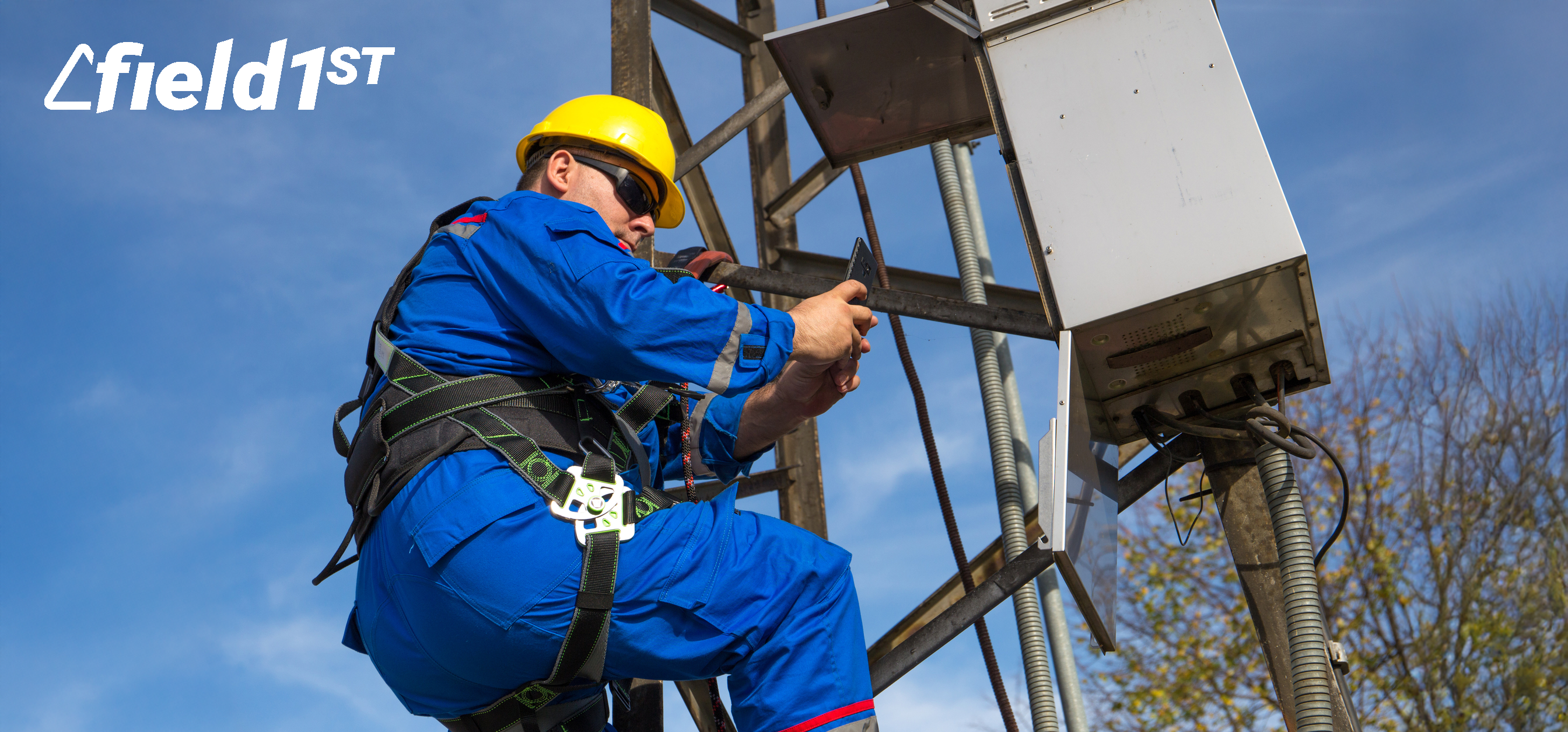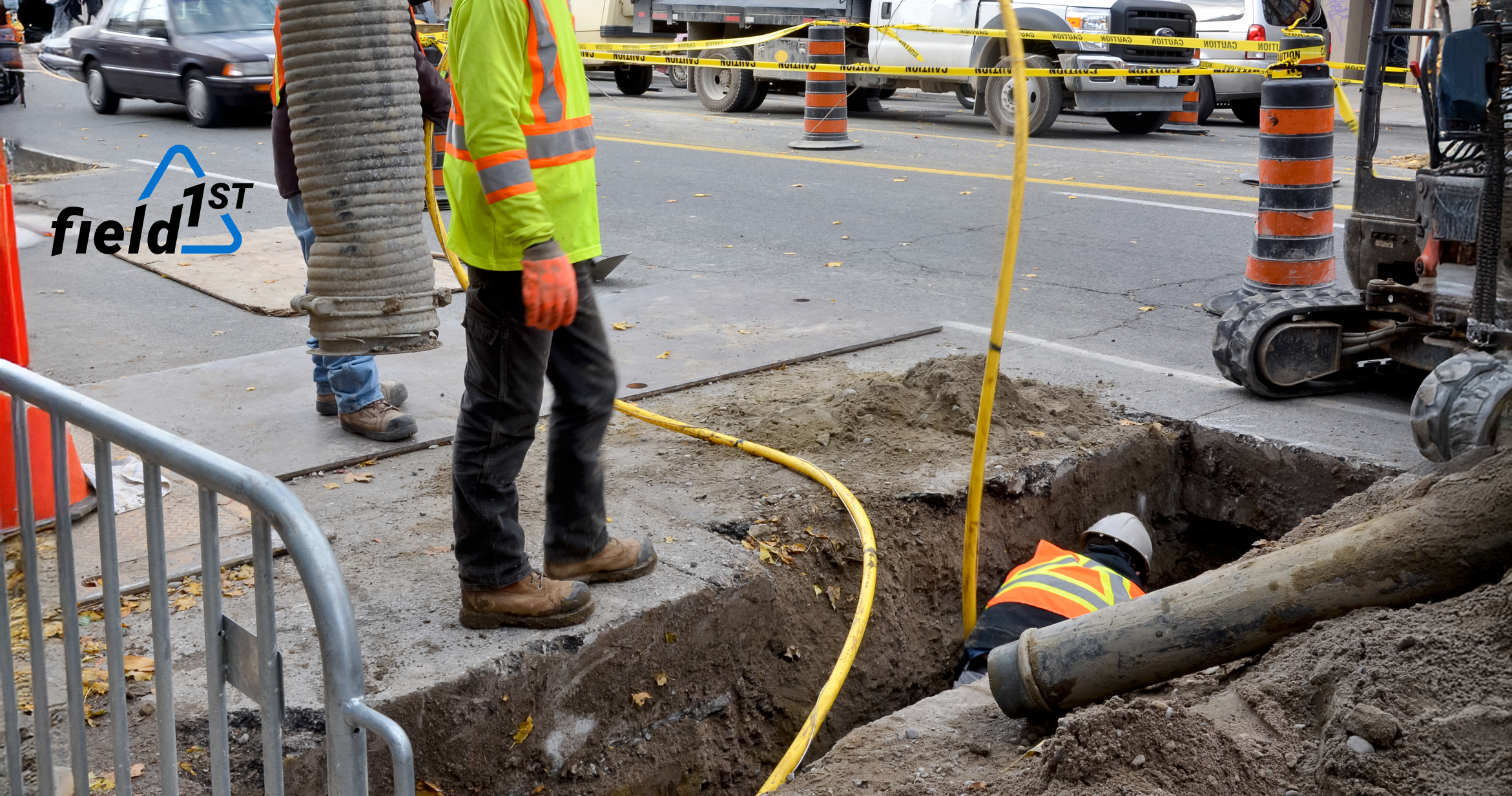- Streamline Hazard Reporting with Digital Tools: Modern hazard identification and risk assessment software enables real-time reporting and analysis, ensuring immediate action to mitigate risks and prevent accidents.
- Enhance Compliance and Accountability: Automated record-keeping and detailed hazard documentation simplify compliance with OSHA and other regulatory standards, while fostering transparency and accountability across teams.
- Leverage Data Analytics for Proactive Safety Measures: Use advanced analytics to identify recurring safety issues, prioritize maintenance, and implement targeted training programs, reducing workplace incidents over the long term.
Workplace safety is a major concern in industries where hazards are part of the daily environment. Companies operating in sectors such as construction, manufacturing, oil and gas, and mining face significant challenges when ensuring their workers’ safety and adhering to regulatory standards. However, these industries are increasingly turning to digital solutions to address these concerns. The use of hazard identification and risk assessment software has emerged as a practical, efficient way to mitigate risks and guarantee compliance.
The ability to quickly report and analyze field hazards helps organizations protect their employees while operating smoothly.
This article explores the significance of field data hazard reporting, its impact on compliance, and how modern tools such as hazard identification and risk assessment software are redefining safety management practices.
The Growing Importance of Field Data Hazard Reporting
The significance of field data hazard reporting cannot be overstated, particularly in industries with constant and severe risks. In high-risk sectors such as construction, oil and gas, mining, and manufacturing, hazards can appear without warning. Quick identification and timely reporting of unsafe conditions are critical to preventing accidents that may lead to injuries, fatalities, or significant operational disturbances.
Field data hazard reporting is not just about compliance; it is a critical part of maintaining a safe and efficient workplace. When hazards go unreported, they increase the likelihood of catastrophic failures, endangering not only individual workers but also entire operations. For example, an overlooked structural fault in a construction site or a faulty machine in a manufacturing plant can quickly escalate into an incident, resulting in project delays, financial loss, and potential legal consequences.
Historically, hazard reporting relied heavily on manual processes such as paper logs, verbal communication, and post-incident reporting. While these methods provided some level of oversight, they were inefficient, prone to human error, and delayed corrective actions. Workers often felt discouraged from reporting hazards due to cumbersome procedures or fear of repercussions. As a result, critical data about near misses and risks often went unrecorded, leaving companies unaware of underlying safety concerns.
The shift toward digital solutions has altered how hazard reporting is managed. Modern tools such as hazard identification and risk assessment software enable workers to capture, report, and share hazard data instantaneously from the field. This real-time reporting capability makes certain that hazards are addressed promptly, significantly reducing the risk of incidents.
Additionally, digital reporting offers transparency and accountability within organizations. Workers can easily upload images, videos, and descriptive reports using mobile devices, guaranteeing that safety managers have access to comprehensive data for immediate evaluation. This level of visibility encourages organizations to act swiftly, minimizing the chances of minor hazards escalating into significant safety breaches.
The growing importance of field data hazard reporting lies in its ability to improve safety outcomes, reduce workplace incidents, and enhance operational efficiency. By implementing tools like hazard and risk assessment software, companies can streamline the reporting process, foster a culture of safety, and protect their most valuable asset—their workforce.
Enhancing Workplace Safety with Hazard Identification and Risk Assessment Software
Workplace safety in high-risk industries requires a structured and proactive approach to hazard management. For years, organizations relied on manual processes to identify risks and report hazards. However, these methods often fell short, leaving gaps in safety protocols that led to preventable incidents. The introduction of hazard identification and risk assessment software has addressed these shortcomings, revolutionizing how safety risks are managed and mitigated.
One of the most significant advantages of this software is its ability to standardize safety processes across all levels of an organization. Workers on-site can quickly identify and report hazards using user-friendly digital platforms, while safety managers receive real-time updates. This smooth integration of field data allows for faster decision-making so that risks are mitigated promptly.
In addition to real-time hazard reporting, the software provides analytical capabilities that help organizations to make data-driven decisions. By analyzing historical data, trends, and recurring issues, safety managers can identify patterns and pinpoint the root causes of hazards. For instance, if a particular piece of machinery consistently appears in hazard reports, the organization can prioritize its maintenance or replacement to prevent future incidents.
Furthermore, the software significantly reduces human error, which is a common limitation of manual reporting. In paper-based systems, critical details may be missed, illegible, or improperly recorded, leading to incomplete hazard reports. In contrast, digital solutions guide workers through the reporting process so that all relevant information is captured accurately and consistently. This level of precision improves the overall quality of hazard reports, enabling safety teams to make informed decisions.
The implementation of risk assessment software also plays a crucial role in enhancing compliance with safety regulations. Regulatory bodies require organizations to maintain detailed records of hazards, incidents, and corrective actions taken. Digital software automates this record-keeping process, ensuring that all data is securely stored and easily retrievable during audits or inspections. This not only simplifies compliance management but also demonstrates the organization’s commitment to maintaining a safe work environment.
Lastly, organizations that adopt hazard identification and risk assessment software experience significant cost savings in the long run. Preventing accidents reduces costs related to medical expenses, compensation claims, regulatory fines, and downtime. Additionally, by addressing hazards proactively, companies can avoid errors to operations for productivity and efficiency remain intact.

Field Hazard Reporting and Compliance Management
Regulatory compliance is a critical component of safety management, particularly in high-risk sectors. Governing bodies such as OSHA and HSE impose stringent regulations to make sure organizations prioritize worker safety. Non-compliance can result in severe penalties, legal liabilities, and reputational damage.
Field data hazard reporting systems simplify compliance by maintaining detailed, traceable records of all reported risks, actions taken, and incident outcomes. Digital solutions make sure that organizations meet safety standards while creating a culture of accountability.
For example, during audits or inspections, companies can provide comprehensive hazard reports, complete with photographic evidence, risk assessments, and time-stamped records. Hazard assessment software eliminates the inefficiencies of paper-based documentation and allows for better organization and retrieval of compliance records.
By automating compliance tracking, organizations can focus on improving workplace safety rather than getting bogged down by administrative tasks.
The Role of Data Analytics in Risk Prevention
One of the most valuable aspects of digital hazard reporting tools is their ability to analyze and interpret data. The information collected from field hazard reports can be processed to identify recurring issues, trends, and risk hotspots. By using advanced analytics, organizations can proactively address safety concerns before they escalate into incidents.
For instance, if a particular piece of equipment is frequently flagged as hazardous, managers can prioritize its maintenance or replacement. Similarly, data analytics can reveal patterns of unsafe behavior or recurring safety violations, enabling targeted training programs to address these issues.
Risk assessment software changes data into practical takeaways, allowing organizations to make informed decisions that enhance safety and reduce risks. This data-driven approach not only improves operational efficiency but also demonstrates a commitment to proactive risk management.
How Digital Solutions Build a Stronger Safety Culture
Building a strong safety culture requires active participation from workers at all levels. Field data hazard reporting systems encourage employees to take ownership of safety by making hazard reporting simple and accessible. When workers feel confident that their reports will lead to action, they are more likely to identify and communicate risks proactively.
Hazard identification and risk assessment software promotes transparency within organizations. Real-time updates, automatic alerts, and open communication channels make certain that workers and managers stay informed about ongoing safety issues. This provides grounds for trust and collaboration, leading to a safer and more productive work environment.
Furthermore, organizations that prioritize hazard reporting demonstrate their commitment to employee well-being, which can boost morale and reduce turnover rates. A culture of safety not only protects workers but also enhances the organization’s reputation as a responsible employer.

Field1st: Streamlining Hazard Reporting and Compliance
Field1st offers a comprehensive digital solution designed to address the challenges of field data hazard reporting. With its advanced features, Field1st enables organizations to efficiently identify, report, and mitigate workplace hazards. By integrating hazard and risk assessment software, Field1st encourages businesses to:
- Improve the accuracy and speed of hazard reporting.
- Ensure compliance with safety regulations through automated record-keeping.
- Utilize data-driven insights to enhance safety strategies.
Field1st’s user-friendly platform makes hazard reporting smoothly, helping organizations prioritize safety without disturbing productivity. To learn more about Field1st’s modern solutions, visit Field1st.
The Long-Term Impact of Field Data Hazard Reporting
Organizations that utilize field data hazard reporting and invest in risk assessment software experience measurable improvements in workplace safety. Long-term benefits include a significant reduction in workplace incidents, increased compliance with safety regulations, and enhanced operational efficiency.
Moreover, companies that prioritize hazard reporting are better equipped to adapt to changing safety standards and evolving industry challenges. By utilizing digital solutions, they can stay ahead of risks, protect their workforce, and maintain a competitive edge.
Safeguarding Workers and Ensuring Excellence with Field Data Hazard Reporting
Field data hazard reporting has become indispensable for industries that operate in high-risk environments. By adopting hazard identification and risk assessment software, organizations can proactively manage safety risks, secure compliance, and foster a culture of accountability. These digital tools offer the accuracy, efficiency, and data-driven insights necessary to safeguard workers and maintain operational excellence.
To explore how Field1st can change your hazard reporting processes, visit Field1st.com.

People Also Ask
1. How does hazard identification and risk assessment software improve workplace safety?
It identifies risks, assesses their severity, and helps prevent accidents by automating and centralizing safety processes.
2. Why is real-time hazard reporting essential for high-risk industries?
It makes sure quick action on hazards, preventing accidents and keeping workers safe in industries like construction and manufacturing.
3. How can digital hazard reporting tools streamline compliance management?
They automate reporting, store data for audits, and help meet safety regulations easily and efficiently.
4. What are the long-term benefits of adopting field data hazard reporting systems?
They reduce accidents, cut costs, improve safety, and help predict and prevent future risks.
Further Reading
Delve deeper into the best practices and strategies for creating safer workplaces with these trusted resources. From OSHA’s recommended safety programs to NIOSH’s research-based hazard prevention techniques and HSE’s risk management guidelines, these articles offer actionable insights to enhance your organization’s safety standards and compliance efforts. Explore the links to learn more and strengthen your safety practices.
-
OSHA: Recommended Practices for Safety and Health Programs
Explore OSHA’s guidelines for creating effective safety programs, including hazard identification, assessment, and control strategies.
-
National Institute for Occupational Safety and Health (NIOSH): Hazard Prevention and Control
Learn about NIOSH’s research-based approaches for identifying and preventing workplace hazards to improve employee safety.
-
Health and Safety Executive (HSE): Managing Risks and Risk Assessment at Work
Understand how organizations can identify hazards, assess risks, and implement preventive measures to maintain workplace safety.










